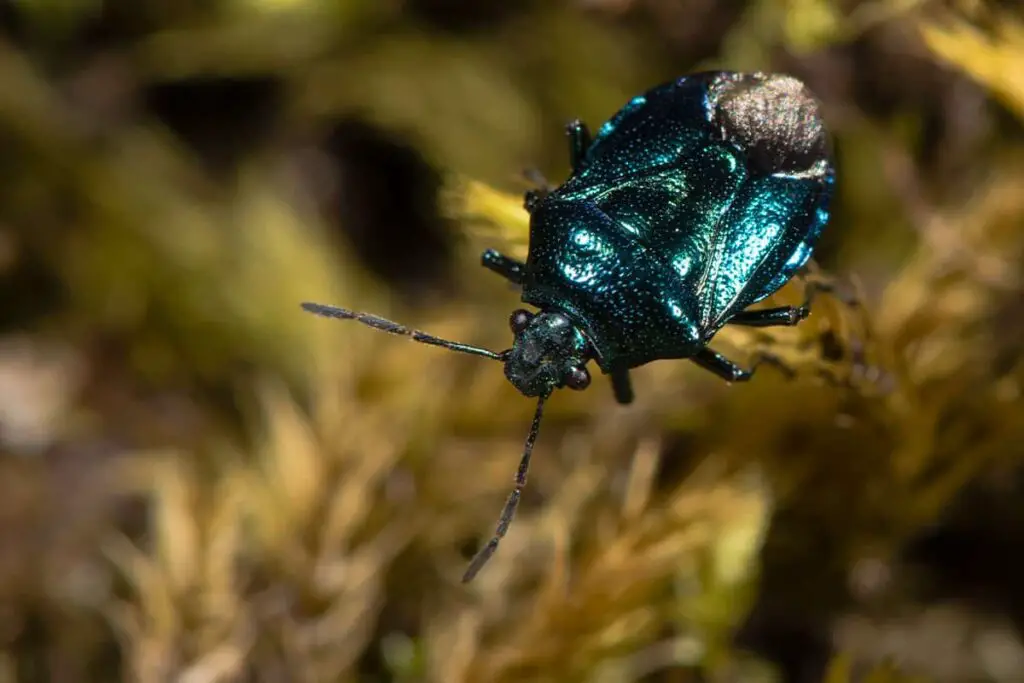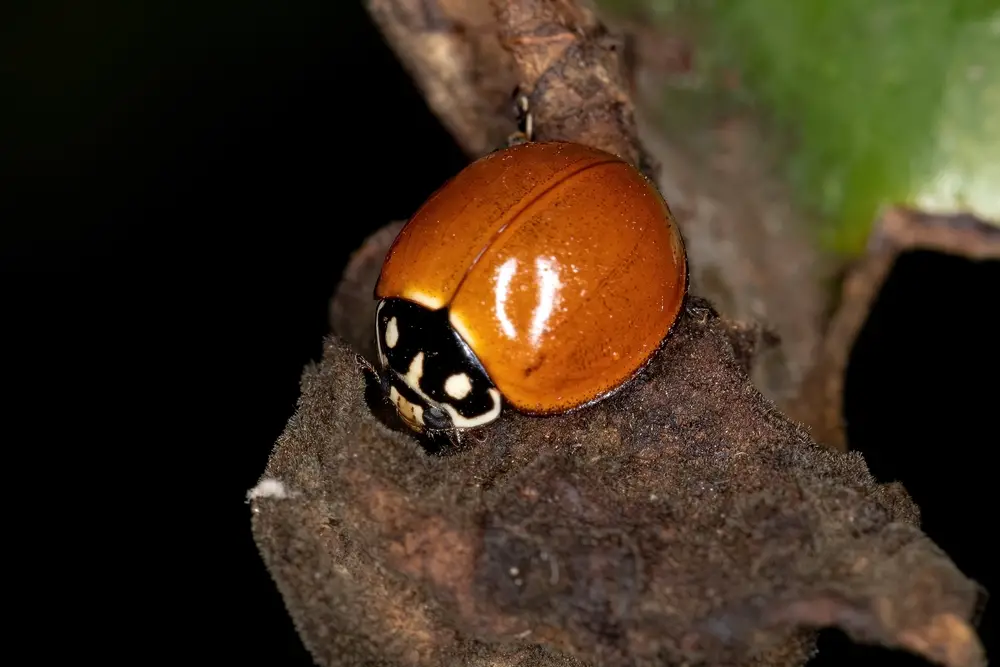
You might have come across a ladybug in your garden and wondered if it’s taking a little nap, struggling to survive, or cleverly deceiving predators. The behavior of ladybugs might surprise you – they are known to play dead when threatened. This defense mechanism, also known as thanatosis, is their way of tricking would-be predators into thinking they’re not a tasty meal.
Understanding why and how ladybugs engage in this act of pretense is fascinating. Despite their delicate appearance, ladybugs are robust creatures with a variety of defense strategies. They can reflex bleed, emitting a foul odor and a yellow fluid from their joints to deter predators. Playing dead adds another layer of protection, reducing the likelihood of an attack by taking advantage of a predator’s preference for lively prey. So, if you stumble upon a very still ladybug, it might just be putting on an impressive performance to avoid becoming someone’s snack!
Ladybug Behavioral Patterns
Ladybugs exhibit several unique behaviors that are essential for their survival. One of their most intriguing habits is the ability to feign death when faced with a threat.
Playing Dead as a Defense Mechanism
When danger looms, ladybugs may resort to playing dead to avoid predation. This act, scientifically known as thanatosis, makes them appear unappetizing and unresponsive to predators. For instance, upon sensing trouble, ladybugs might fold in their legs and remain motionless, which can effectively deter potential threats. If you encounter a ladybug that seems lifeless, it may be employing this tactic to protect itself.
Antipredator Tactics in Ladybugs
Besides playing dead, ladybugs have a number of other antipredator tactics. These include their bright and colorful elytra, which serve as a warning due to their often toxic nature to predators. Additionally, ladybugs are able to secrete a yellow fluid from their joints when threatened, which contains alkaloids that are distasteful to their foes. The combination of visual warnings and chemical defenses provides them with a greater chance to survive encounters with predators.
The Science Behind Thanatosis
Thanatosis, or tonic immobility, is a remarkable survival strategy that ladybugs and other animals use to evade predators by feigning death. Your understanding of this behavior can be enriched by exploring its physiological mechanisms and the factors that influence its duration and onset.
Physiological Basis for Playing Dead
When a ladybug senses danger, its body can engage in thanatosis, which involves mimicking the appearance of being dead to a potential predator. The physiological response includes a drastic reduction in metabolic rate and a cessation of movement, creating the illusion that the ladybug is not a viable target. This form of defensive behavior may involve the release of a foul-smelling odor to further dissuade predators from considering the ladybug as a meal.
Duration and Triggers
The length of time a ladybug remains in a state of thanatosis can vary. In many cases, this state is maintained just long enough to decrease the threat level, and there isn’t a fixed period for how long they play dead. Environmental factors, the predator’s behavior, and the intensity of the threat can all serve as triggers for a ladybug to enter or exit this state. Ultimately, the combination of these factors will determine how long the ladybug persists in its death-feigning state for survival.
Observing Ladybugs in Nature
When you’re observing ladybugs, you’re likely to witness a behavior known as thanatosis, which can appear as if the insects are playing dead. Understanding and documenting this behavior provides intriguing insights into their survival strategies.
Identifying Thanatosis
To identify thanatosis in ladybugs, observe a ladybug’s response to being touched or threatened. Ladybugs exhibit thanatosis by staying immobile and retracting their legs, making them appear lifeless. Some may even release a foul-smelling odor as a deterrent against predators.
Documenting Behavior
Tools You’ll Need:
- Notebook or digital device for notes
- Camera or smartphone for photographic evidence
Steps for Documentation:
- Find ladybugs typically on leaves or flowers.
- Gently simulate a threat or wait for a natural threat to occur.
- Take note of the duration of the immobility and any other defense mechanisms.
- Capture photos or videos, especially if changes occur in the ladybug’s behavior.
By closely observing and recording these behaviors, you can contribute to the understanding of ladybugs and their interactions with the environment.
Frequently Asked Questions
Ladybugs have fascinating behaviors that often prompt questions about their interactions with the environment and survival strategies. In this section, you’ll find answers to some common queries about these colorful beetles.
How long do ladybugs typically remain motionless when playing dead?
When ladybugs play dead—a behavior known as thanatosis—they can remain motionless for several minutes up to an hour. The exact time may vary depending on the perceived threat level.
Is it common for ladybugs to bite humans?
While it is relatively uncommon, ladybugs can bite humans. These bites are usually harmless and more like a pinch.
What are the primary food sources for ladybugs?
Ladybugs primarily feed on aphids, consuming hundreds during their larval stage for growth and sustenance. They also eat other soft-bodied insects and mites.
How can you distinguish between a sleeping ladybug and a deceased one?
Distinguishing between a sleeping and deceased ladybug can be tricky, but a sleeping ladybug may respond to gentle stimuli or light, while a deceased one will be unresponsive over time.
During what periods are ladybugs known to hibernate?
Ladybugs are known to hibernate during the colder months of the year when temperatures drop and food supplies dwindle. They often group together in large numbers for warmth.
Why might a ladybug appear to be motionless on its back?
A ladybug might appear motionless on its back as a defense mechanism to deter predators. This posture, combined with the release of a foul-smelling odor, can make a ladybug seem dead to potential threats.
Driven by a passion for those tiny creatures that rule our world, we at Bug Domain strive to be your go-to resource for information on insects.



